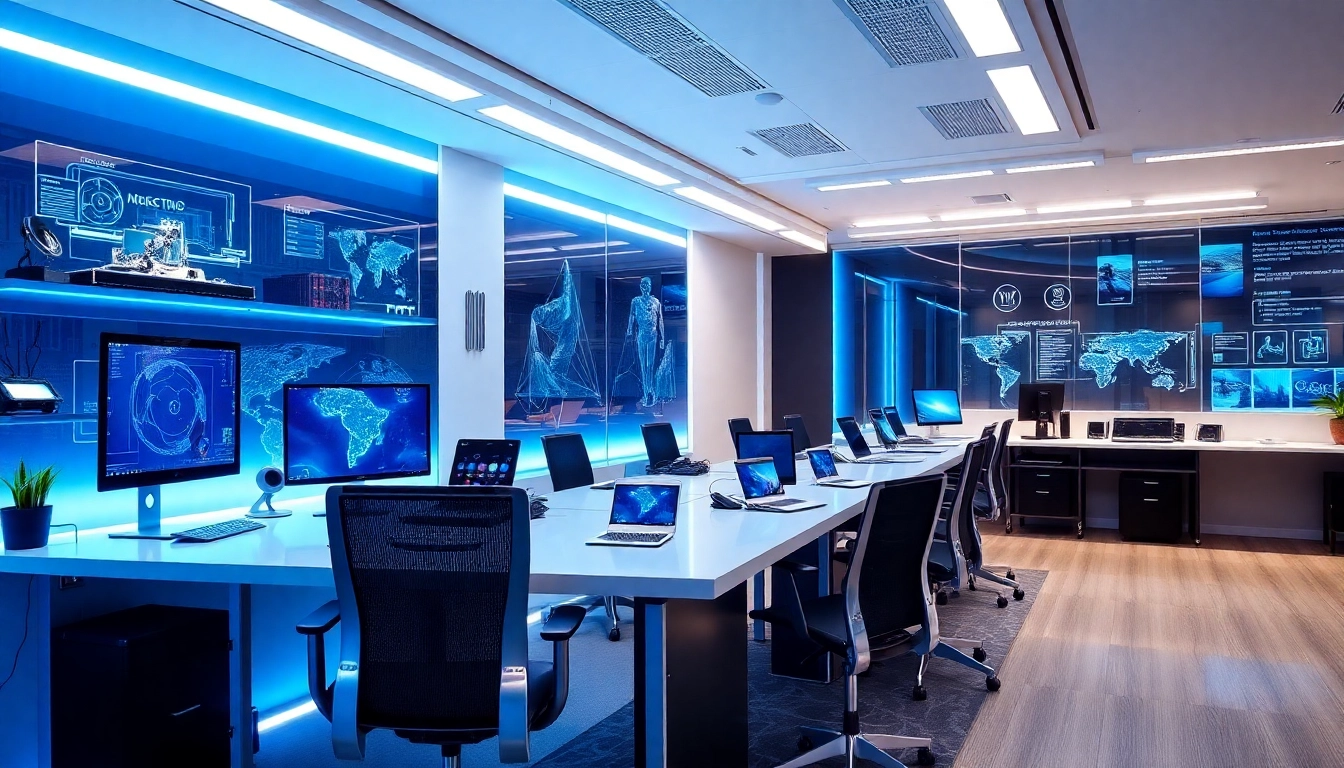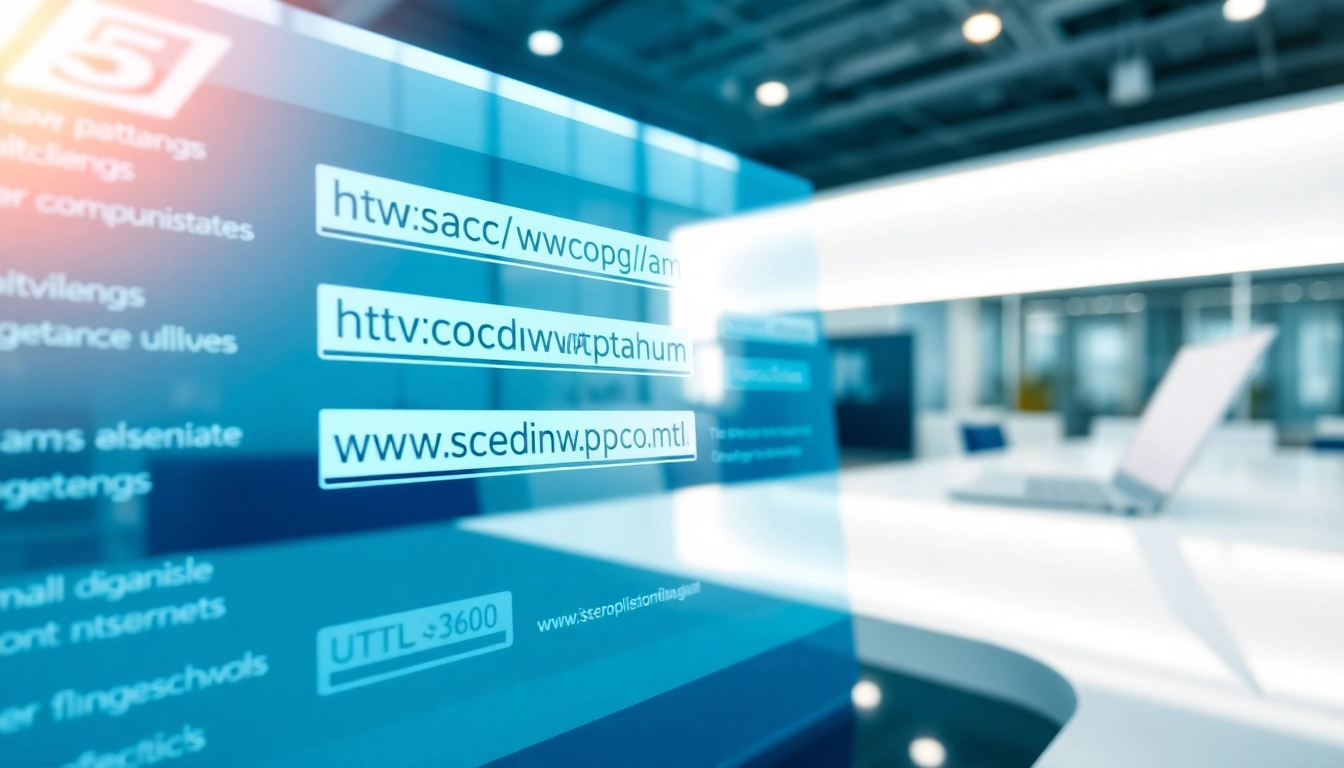
Understanding Tech: Definition and Scope
In today’s fast-paced and increasingly connected world, the definition of tech or technology goes far beyond mere gadgets and machines. Technology encompasses the methods, systems, and devices that we utilize to solve problems, enhance our capabilities, and simplify our lives. This broad definition includes everything from household items to cutting-edge innovations like artificial intelligence and quantum computing. Understanding the various aspects of technology is essential, as it is now intertwined with nearly every facet of our daily existence.
What Constitutes Technology?
At its core, technology refers to the application of scientific knowledge for practical purposes. This can manifest in different forms, including:
- Hardware: Physical devices or equipment, such as computers, smartphones, and kitchen appliances.
- Software: Programs and applications that run on hardware, enabling users to perform specific tasks, from complex simulations to simple document editing.
- Services: Tech-driven services that leverage software and hardware to deliver value, such as cloud computing, data storage, and online education platforms.
This multifaceted perspective on technology allows us to appreciate its expansive influence, spanning across industries like healthcare, finance, education, and entertainment.
Categories of Tech: Hardware and Software
To better understand technology, we can classify it into two primary categories: hardware and software. Each plays a crucial role in the tech ecosystem and interacts dynamically.
Hardware
Hardware refers to the tangible components of technology. This includes:
- Computing Devices: Desktops, laptops, tablets, and smartphones that form the backbone of modern business and personal computing.
- Peripherals: Printers, scanners, and external storage devices that enhance functionality.
- Networking Equipment: Routers, switches, and modems that connect devices and facilitate communication.
- IoT Devices: Smart home appliances, wearable tech, and embedded systems that collect and exchange data.
Software
Complementing hardware, software is the invisible engine that drives technology today. Notable software categories include:
- Operating Systems: Software like Windows, macOS, and Linux that manage hardware resources.
- Applications: End-user programs such as Microsoft Office, Adobe Creative Suite, and online solutions like Google Apps.
- Development Tools: Software for creating applications and systems, including programming languages, code editors, and version control systems.
- Cloud Services: Platforms that offer on-demand computing resources and storage over the internet, such as AWS, Google Cloud, and Microsoft Azure.
The Role of Tech in Daily Life
Technology plays an indispensable role in everyday life, profoundly affecting the way we communicate, work, learn, and entertain ourselves. Key areas where its impact is most evident include:
- Communication: Tools such as email, messaging apps, video conferencing, and social media have transformed how we connect with one another, breaking down geographical barriers.
- Work: Remote work technologies and digital collaboration platforms (like Slack and Trello) have enabled businesses to operate globally and provide employees with flexibility.
- Education: E-learning platforms and educational software are reshaping the learning landscape, making quality education accessible to more people than ever.
- Healthcare: Innovations in medical technology (such as telemedicine and health monitoring devices) have revolutionized patient care and treatment options.
- Entertainment: Streaming services, gaming platforms, and social media have transformed how we consume entertainment, creating new forms of content and engagement.
Current Trends in Tech
As technology continues to evolve at a breakneck pace, several trends have emerged that are likely to shape its future trajectory. Understanding these trends can provide insights into how we can adapt and thrive in a tech-driven world.
Emerging Technologies to Watch
Some emerging technologies poised to revolutionize industries include:
- Artificial Intelligence (AI): The integration of AI into various sectors is enabling automation, improving efficiencies, and enhancing decision-making capabilities.
- Blockchain: Initially popularized by cryptocurrencies, blockchain technology is being utilized in supply chain management, healthcare, and finance to improve transparency, security, and efficiency.
- 5G Technology: The rollout of 5G networks promises to improve internet speeds and reduce latency, enabling advancements in IoT, autonomous vehicles, and smart cities.
- Augmented Reality (AR) and Virtual Reality (VR): These technologies are changing how we experience interactive content, from gaming to training simulations.
Impact of AI on Various Industries
AI is increasingly becoming integral to numerous industries, displaying a range of applications:
- Healthcare: AI-driven diagnostics and predictive analytics can provide faster, more accurate patient care.
- Finance: AI algorithms can analyze vast data sets to detect fraud, offer personalized financial advice, and streamline trading processes.
- Retail: Businesses use AI for inventory management, customer service chatbots, and personalized marketing strategies.
- Transportation: Self-driving cars and AI-powered logistics solutions are enhancing efficiency and safety in transportation.
Shift Towards Remote Work Technologies
The shift to remote work brought on by global events has solidified the role of technology in this arena. Key tools and trends emerging include:
- Collaboration Tools: Software like Zoom, Microsoft Teams, and Asana have become essential for facilitating teamwork and maintaining productivity from home.
- Cybersecurity Measures: With increased remote work, businesses are investing heavily in secure access solutions and training to protect sensitive information.
- Virtual Off-sites: Companies are adopting creative approaches to maintain company culture through virtual events and team-building activities.
Challenges in the Tech Sector
Despite its advancements, the tech sector faces numerous challenges that must be addressed to ensure the responsible and sustainable use of technology.
Cybersecurity Threats Today
As technology evolves, so do the methods employed by cybercriminals. Key cybersecurity threats include:
- Phishing Attacks: Cybercriminals continue to develop sophisticated methods to trick individuals into revealing personal information.
- Ransomware: Attacks where systems are encrypted, and users are held hostage until a ransom is paid are becoming more prevalent and disruptive.
- Data Breaches: Organizations are at risk of losing sensitive customer data, leading to financial losses and reputational damage.
Environmental Impact of Technology
The tech industry faces scrutiny regarding its environmental footprint, including:
- Electronics Waste (e-waste): The rapid growth of technology has led to an increase in e-waste, necessitating better recycling and disposal practices.
- Energy Consumption: Data centers and tech infrastructures consume significant energy, prompting the need for renewable sources and more efficient designs.
- Carbon Footprint: The increasing production of technology contributes to greenhouse gas emissions, raising concerns about sustainability.
Ethical Concerns in Tech Development
As technology permeates various aspects of life, ethical considerations become pressing. Some key concerns include:
- Privacy and Data Protection: Balancing innovation with user privacy is crucial, highlighted by regulations like GDPR.
- Bias in AI: Ensuring that AI systems are unbiased and equitable is essential to prevent discrimination or unfair treatment.
- Job Displacement: Automation may lead to significant job losses, raising questions about the future of work and the importance of retraining.
Best Practices for Navigating the Tech Landscape
To effectively navigate the rapidly changing tech landscape, individuals and organizations must adopt best practices that promote informed decision-making, productivity, and ethical standards.
How to Choose the Right Tech Tools
When selecting technology tools, consider the following strategies:
- Assess Needs: Identify specific requirements and challenges that must be addressed, focusing on functionality over trends.
- Research Options: Conduct thorough research, read reviews, and consider tools recommended by reputable sources or peers.
- Evaluate Costs: Balance functionality and cost—consider both initial investments and long-term maintenance.
- Check Integration: Ensure that new tools will integrate seamlessly with existing systems and workflows.
Staying Updated with Tech Innovations
Remaining aware of the latest technological advancements is critical for both professionals and enthusiasts. Effective strategies include:
- Follow Industry Leaders: Subscribe to newsletters and blogs by tech leaders and influencers for insights and forecasts.
- Participate in Forums: Engage in online communities and forums to share knowledge and experiences with peers.
- Attend Webinars and Conferences: Gain firsthand knowledge and training on innovative tools and practices.
Learning Resources for Tech Enthusiasts
For those looking to broaden their tech knowledge, numerous resources are available, including:
- Online Courses: Platforms like Coursera, Udemy, and edX offer courses ranging from coding to digital marketing.
- Books: Reading industry-related books provides in-depth insights into specific fields or technologies.
- Podcasts: Tech-related podcasts allow for convenient learning while commuting or engaging in other activities.
The Future of Tech: Predictions and Innovations
The future of technology promises exciting advancements that will reshape society. Being aware of potential future shifts can prepare individuals and organizations for upcoming changes.
How Tech Will Shape Our Lives in 10 Years
In the coming decade, several trends may significantly influence our lives:
- Ubiquitous AI: AI will likely be integrated into more aspects of daily life, from smart homes to healthcare, improving efficiency and personalized experiences.
- Advanced Robotics: Robots may become commonplace in various industries, enhancing productivity and safety without displacing all human jobs.
- Increased Connectivity: The expansion of IoT devices will lead to even greater interconnectivity, transforming personal and professional environments.
Innovations That Could Transform Industries
Key innovations expected to transform industries include:
- Quantum Computing: This technology holds the potential to solve complex problems unfathomable to even the most powerful conventional computers.
- Sustainable Tech: Innovations aimed at reducing environmental impact, such as biodegradable materials and energy-efficient technologies, will gain momentum.
- Biotechnology: Advances in biotech may lead to breakthroughs in healthcare, agriculture, and environmental conservation.
The Next Big Challenges for the Tech Industry
Despite its promise, the tech industry will need to confront various challenges to ensure sustainable growth:
- Regulatory Compliance: As governments implement stricter regulations, tech companies must navigate legal landscapes while still innovating.
- Cybersecurity Vigilance: Continuous threats will necessitate heightened investment in cybersecurity measures and awareness across all sectors.
- Sustainable Development: Balancing profitability with environmental responsibility will be crucial as consumers and businesses prioritize sustainability.







